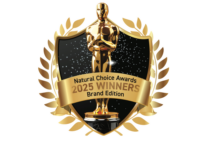What current and evolving trends are looking fine in the beauty category? We asked the experts in topical and nutri-beauty to get us up to speed on the latest. Priti Gandhi, NOW Cosmetics Scientist, points to three trends that should be on your radar:
01 - Skinimalism
Skinimalism means simplifying the skincare routine by using multi-use products, Gandhi says. “Ingredients such as ceramides and bakuchiol are known to replace the need to use a plethora of products without overwhelming the skin.”
02 - Beauty from within
Beauty from within is growing as consumers are looking beyond what can be applied to the skin topically and focusing on nutrition and supplements that will benefit the skin.
03 - Skinification
Skinification goes beyond aesthetics. “There's a palpable shift towards embracing natural aging with grace, confidence and acceptance,” Gandhi explains. “Rather than concealing signs of aging, today's skincare enthusiasts are focused on nurturing a healthy glow that celebrates the beauty of every stage of life. This shift reflects a deeper cultural appreciation for authenticity and self-acceptance, encouraging individuals to feel empowered in their own skin. The concept of ‘skinification’ has expanded as holistic skincare solutions have been discovered by users. Consumers are getting rid of harmful products and replacing them with high-quality products that promote head-to-toe wellness. This trend has become increasingly popular as consumers have made the switch of using products that make them look good to those that make them feel good.”
Jessica Arnaly, Senior Marketing & Business Development Manager, Balchem Human Nutrition & Health, seconds that last point. “Holistic wellbeing continues to be a top priority for consumers globally, and this is impacting the skin and beauty market too. Individuals are no longer focused solely on appearance, but are seeking solutions that help them feel good inside too. This shift has blurred the lines between beauty and well-being, leading to the rise in wellness-inspired products, such as skincare and makeup containing probiotic or Ayurvedic ingredients and ingestible supplements.”
Elina Fedotova, Founder & Chief Formulator, Elina Organics, has witnessed this shift over the decades. ‘A lot has changed in the skincare industry since I started Elina Organics over 25 years ago. More people increasingly recognize the importance of organic products. This is apparent by the way many individuals are switching to organic food. I always say that skincare is food for the skin, so as people transition their diet, I think more people will move their skincare in a more natural direction as well. As the interests of consumers shift, it will result in more environmentally friendly practices, biodegradable options, and more harmonious use of natural ingredients.” With ingredients, this means more phyto-based ingredients, natural peptides, and preservatives made from minerals and fermented plants, all of which are from organic sources directly from nature, Fedotova says.
In terms of emerging trends, Arnaly forecasts an evolution of skinimilism. “Premiumization is set to be a major focus in the beauty industry, resulting in a wave of ‘new-age minimalism.’ Put simply, consumers are moving away from using tons of different products and, instead, they are carefully picking a smaller but high-value range of solutions with clinically proven benefits, placing more emphasis on quality and effectiveness. According to a McKinsey & Company survey, nearly half of Gen-Zers conduct extensive research on products and their benefits before making a purchase, similarly to Millennials. To stand out in this competitive space, brands must be able to offer advanced formulations with premium, science-backed ingredients to gain credibility and customer trust.”
Those ingredients should be working overtime, too, says Maggie McNamara, VP of Marketing, Gencor. “This ‘less is more’ approach comes with great expectations of effectiveness and value. Shoppers expect clinically proven, multi-targeted products that promote improved skin health and appearance, so it is crucial that the industry conducts gold-standard, human clinical trials before going to market.”
Antonio Vendrell, Marketing Director, Bioiberica, stresses, “Science is key here, with almost one third of consumers conducting independent research before buying products for skin health, and 50% stating that scientifically proven ingredients are important to them. Hand in hand with this is the rising need for transparency —through clearly labeling ingredients and highlighting scientific evidence, consumers can easily understand the benefits behind a beauty product.”

In addition, McNamara says, consumers are taking a multipronged approach to beauty care. This includes lifestyle strategies such as quality sleep, staying hydrated, eating more nutrient-dense foods, and focusing on topical and ingestible beauty products.
“There is a surge in demand for the beauty supplements market, mainly driven by consumers' increased focus on intentional self-care. The market is expected to surge at a remarkable rate (CAGR of 14.3%) thanks to the popularity of the clean beauty movement in particular creating demand for natural supplements,” says Franziska Weichmann, Ph.D. Manager of Scientific Communications and Product Development, Horphag Research (exclusive worldwide supplier of Pycnogenol). “Consciousness about overall well-being is merging with the traditional desire for more youthful appearance, resulting in more consumer inclination towards health and beauty solutions that address beauty and overall health holistically."
The opportunity in this space is significant, McNamara adds: The global nutricosmetics market is estimated to be valued at $7 billion in 2023 and is expected to reach $15 billion by 2033.
Consumers are looking to functional foods as well. “Continued consumer demand for convenience is influencing the evolution of the beauty category,” Vendrell explains. “More and more everyday food products incorporating functional ingredients are emerging on the market, appealing to the on-the-go consumers looking for convenient holistic health and beauty solutions. Novel food formats, such as fortified teas and dairy products, are growing in popularity—there has been a 78% increase in food, beverage and supplement launches with functional beauty claims.”
 Adding more data insights, Audrey Ross, ND, MH, Senior National Educator, Country Life Vitamins, reports: “The beauty supplement category is growing by double digits and we’re seeing more consumers flock to social media for product information and recommendations. There’s high demand for quality supplements that work, and consumers are willing to pay more for them. Skin and hair products that support specific needs are the most sought after, with men increasingly researching beauty supplements, particularly for hair support. According to SPINS 2024 Beauty Trends, natural products hold a 10% share of the beauty industry (MULO + Natural) but account for 29% of the total beauty industry’s overall growth. This reflects broader trends where consumers focus on living active and healthy lives, choosing products that protect the body’s biome and address root problems. Incorporating global traditions like K-Beauty and daily sun protection into routines is also becoming more common.”
Adding more data insights, Audrey Ross, ND, MH, Senior National Educator, Country Life Vitamins, reports: “The beauty supplement category is growing by double digits and we’re seeing more consumers flock to social media for product information and recommendations. There’s high demand for quality supplements that work, and consumers are willing to pay more for them. Skin and hair products that support specific needs are the most sought after, with men increasingly researching beauty supplements, particularly for hair support. According to SPINS 2024 Beauty Trends, natural products hold a 10% share of the beauty industry (MULO + Natural) but account for 29% of the total beauty industry’s overall growth. This reflects broader trends where consumers focus on living active and healthy lives, choosing products that protect the body’s biome and address root problems. Incorporating global traditions like K-Beauty and daily sun protection into routines is also becoming more common.”
Another area to watch: “Other trends that are, in a way, also linked to health revolve around ‘not-so-pretty beauty,’ which includes hair and scalp issues (hair growth and fall, scalp seborrhea, dandruff, itch, and even acne), facial acne, eye bags, aging signs and more,” say Dr. Liki von Oppen-Bezalel, Business Development Director, TriNutra. “Many of those have a direct link to proper nutrition and lifestyle.”
Consumers also increasingly understand a direct link between “not-so-pretty beauty” issues and a healthy and balanced microbiome that can directly impact their health and well-being, says Dr. von Oppen-Bezalel. “This topic goes beyond a trend; a healthy microbiome is at the essence of outside (skin, scalp, hair) and inside body health; the two are entangled."
Speaking about the microbiome, Dr. von Oppen-Bezalel adds, "There is more and more evidence linking the effects of botanical supplements on the balance between good and harmful microorganisms in our gut and skin. These effects on the microbiome are shown to be linked to our mental state (gut-brain, skin-brain axis), skin health and appearance (gut-skin axis & skin microbiota), as well as metabolic health, including healthy mitochondrial functions, energy production, and recovery of the body from injury and stress.”
Overall, reports Vendrell, research has revealed that 66% of consumers now recognize the link between skin health and overall health.
Serving the Conscious Beauty Consumer
 “When we think about current trends in beauty, it helps to break them down into categories, such as Ingredients, Packaging, and Marketing, with an underlying theme of Personalization across the board,” says Jamie Wiecks, Community Goods.
“When we think about current trends in beauty, it helps to break them down into categories, such as Ingredients, Packaging, and Marketing, with an underlying theme of Personalization across the board,” says Jamie Wiecks, Community Goods.
Ingredients: There’s a long-term shift towards brands that utilize clean and sustainable formulas, while avoiding harsh or toxic ingredients like PFAS and formaldehyde,” Wiecks says. “The key here is the products must be effective and create a delightful experience, and the sustainability must be real—no greenwashing. This trend has been present for years and is only getting stronger.” With 65% of people seeking out more sustainable brands, Wiecks adds, "it’s created opportunities for conscious young companies (like Community Goods) who avoid nasty ingredients and instead create effective, natural products.”
Packaging: The average person applies nine personal care products each day, Wiecks says. “The trend here is also toward sustainability and less waste. Community Goods is growing from the ground up as a plastic-free company, and fortunately, we’re not the only ones. Even some larger companies are starting to embrace more sustainable packaging. With more reports coming out about the dangers of micro- and nano-plastics, we believe the trend toward plastic-free will continue growing for years.”
Marketing: This encapsulates the evolution of companies’ go-to-market strategies. “Instagram continues to be a powerhouse, but TikTok has taken off—it is now the top social media channel for beauty brands,” Wiecks says. “In fact, I recently read that 89% of TikTok users have made a beauty purchase after seeing a product on the platform; Instagram was second, at 66%. Retailers need to be aware of this, as it creates both threats and opportunities. Savvy retailers will be aware of these trends, and seek out those viral products or similar products, knowing their customers have seen them online. Other retailers will miss those opportunities, without even knowing they missed them.”
Personalization: This underscores all of the above. “People are looking for products made for their hair type, their skin type, their concern, and so on,” Wiecks says. “This certainly impacts the ingredients they seek out, but also relates to the packaging and marketing of those products. People want to support companies with similar values, and products endorsed by the influencers and creators they trust. And now, more than ever, it’s easy to find those companies and those products.”
Andrea Lefkovits, Founder of Virginskin, stresses that this can’t just be lip-service. A brand can say their product features a buzzworthy ingredient, but not all brands feature that buzzworthy ingredient at active levels, she says, and similar can be said for greenwashing. “The consumer wants to invest in brands that do business with a conscience as well. Sustainability has been a hot term for some time now, but legitimate sustainability is not easy to achieve, and today’s consumer is not fooled by brands that merely use sustainability as a marketing tool.”
Retail Success Strategies
Stock science: “Retailers should be stocking products with clinical backing and synergistic, simple product lines,” says McNamara. “This will offer consumers easy-to-incorporate-beauty routines and meet their demands for natural, clean beauty products.”
To ensure the customer experiences positive results, it is imperative to review the specific ingredients in the offered products, verifying they are clinically studied and what the studies showed, stresses Ross. “This will help the retailer direct the consumer to the product best suited for their individual needs, giving them the best possible results from the supplement(s) they choose.”
Partner for the win: Your brand partners can help ensure that employees are up on all of the emerging science and shifting trends. Rely on manufacturers for training, advises Gandhi.
 Engage & evolve: “Commit to being transparent and honest with your customer,” says Lefkovits. “Ask for customer feedback. It is vital to understand what is working for your brand and identifying areas of improvement. This can also help inform your decisions about which products to add next if you are looking to expand your product line. Finally, communicate with your customer and your community through social platforms and activations. Communication and trust are how brand loyalty is created and maintained.”
Engage & evolve: “Commit to being transparent and honest with your customer,” says Lefkovits. “Ask for customer feedback. It is vital to understand what is working for your brand and identifying areas of improvement. This can also help inform your decisions about which products to add next if you are looking to expand your product line. Finally, communicate with your customer and your community through social platforms and activations. Communication and trust are how brand loyalty is created and maintained.”
Wiecks adds: “The old advice is still the best advice: Know your customers. Know what they value, what social media outlets they use, and what their concerns are. Have real conversations with them about what they’re looking for and what they’re curious about. Listening to what they need will likely get you further than telling them what they need.”
Ingredients that Deliver Beauty & Beyond
Which ingredients are backed by science to give consumers the benefits they seek? Stay tuned for part 2 of this article, featuring 25+ beauty boosters for both topical and ingestable products, plus more insights from our experts to drive success.










